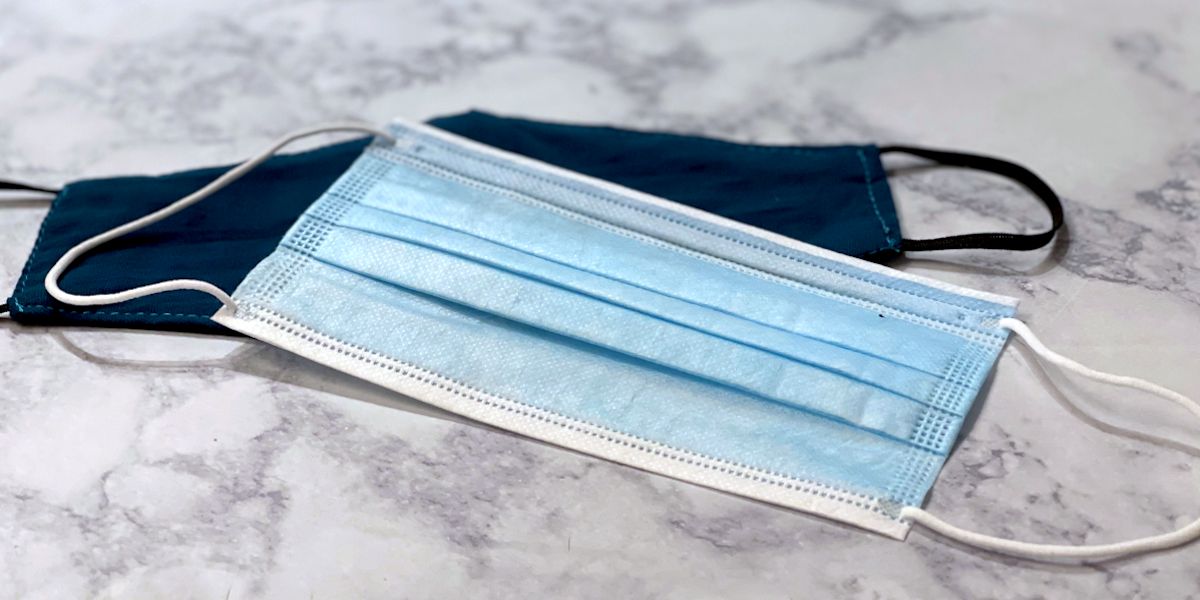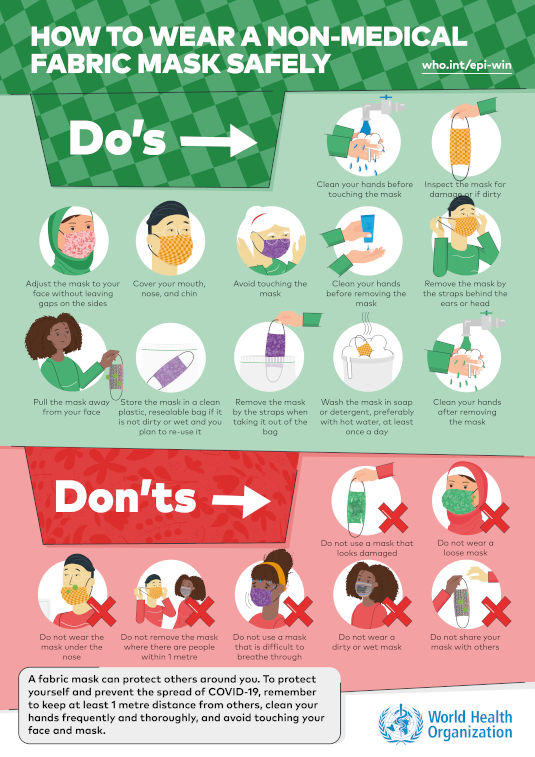The year 2020 was unusual and difficult for people all over the world due to the COVID-19 pandemic. I myself never thought I would live in a time where everyone would be walking around with a face mask in public. Since the outbreak began one year ago, in January 2020, many people have questioned the effectiveness of face masks, and many recent studies have shown their true scientific effectiveness.
 While some face masks are single-layer masks made up of non-woven fabric or wood pulp tissue paper, others are made from 100% cotton, but the most effective masks seem to be N95 masks, but often times the consumer does not know the differences between one or the other. Photo by Molly Munoz
While some face masks are single-layer masks made up of non-woven fabric or wood pulp tissue paper, others are made from 100% cotton, but the most effective masks seem to be N95 masks, but often times the consumer does not know the differences between one or the other. Photo by Molly Munoz
__________________________________________________
A person can be infected by the virus by directly breathing in the virus or by touching a contaminated surface and proceeding to touch one’s eyes, mouth or nose. Also according to the same article, the transmission of the virus can be decreased by 55% through hand washing and 68% by wearing a mask. With wearing a mask, washing of hands, utilizing gloves and any other viral protective gear, the virus can be decreased by 91%. As the positivity rates began to climb in the United States in March 2020, the CDC as well as other health professionals encouraged the wearing of facial masks to reduce the spread of the virus. But do they actually work? And, if so, which ones work best? Due to the increasing panic of the need for masks, companies quickly began producing face masks of many various types of materials, but that doesn’t mean all are equally effective. The International Journal of Health and Allied Sciences reported in an article released on Oct. 1, 2020, on the many available types of masks and their rates on effectiveness. One of the first masks you may see at a hardware store is a dust mask. This mask does not provide any protection against COVID-19 as it is a thin, flexible paper mask. A mask usually worn in foodservice settings is a single-layer face mask made up of non-woven fabric or wood pulp tissue paper. These masks unfortunately also do not provide any protection against the coronavirus. Cloth masks can be effective if two to three layers of fabric are included and made up of 100% cotton. Surgical masks have been widely used throughout the pandemic, but just like the name, these masks were intended for surgeons. Interestingly enough, they were originally created to protect patients during surgery in case the surgeon were to cough or sneeze. Unfortunately, surgical masks are not meant to protect the wearer from bacteria or viral, airborne illnesses. The effectiveness of these masks depends completely on the layers that make up the mask. The interior layer is created with a material used to absorb any moisture that may accumulate from the user breathing into the mask. The middle layer contains material to act as a filter for anything the wearer may come in contact with. Lastly, the outer layer is made up of material that repels liquid. Surgical masks have multiple pleats meant to allow the wearer to extend the mask to where the chin and nose are evenly covered to avoid any outside particles from entering the mask from the top or bottom. The most effective mask to protect the individual and others from spreading the coronavirus is the N95 mask. The close, tight fit of this mask and the electrostatically charged microfibers prevent any outside particles from entering the mask. The microfibers create a continuous filtration cycle to rid of harmful microorganisms. However, these masks can make it difficult for the wearer to breathe and often get moist and hot after wearing it for more than 30 minutes. Though these masks are the most protective, they are mainly suggested for healthcare providers who come in close contact with a coronavirus patient. It is suggested that individuals with health concerns that may cause difficulty breathing should consult with a health provider before using an N95 mask. A recent study by PLOS ONE described the effectiveness of using sterilization wraps as temporary face masks due to the shortage of face masks in some areas of the world. Sterilization wraps were originally created to wrap sterile surgical instruments, but in this recent study have demonstrated a successful rate of removing harmful particles from the air. The overall cost of production of these masks was about 30 cents per mask. The study also showed that using the non-woven polypropylene used to create the sterilization wrap is an inexpensive material to produce more face masks. A common concern I have heard on the news or social media is the possible health risks that masks can cause. A study conducted by the University Aviation Association involving instructor pilots examined the effects face masks had on CO2, heart rate, respiration rate and oxygen saturation while using a face mask at an oxygen level simulated to 5,000 feet. This graphic presents guidance from the World Health Organization on how to properly wear a non-medical fabric mask to keep you and others safe. Graphic courtesy of Wikimedia Commons There were 32 instructor pilots who volunteered to participate in this study where a total of 90 minutes were spent in a normobaric chamber with half of participants wearing cloth masks and the other half with a paper face mask. The pilots were examined before the experiment began, 15 minutes after entering the chamber, 45 minutes and 90 minutes after entering for the final time. The examination was done from guidelines provided by the CDC using a capnograph to measure CO2, heart rate, respiration rate and O2 saturation. Neither the paper nor cloth face masks exhibited any health issues to any of the 32 pilots. The only complaints reported were discomfort with wearing the mask, lack of mobility and fatigue. The study concluded that wearing masks does not cause any health or safety issues, even at a simulated altitude of 5,000 feet. For teachers and professors, face masks have made it more difficult to easily teach, so in order to combat these difficulties, transparent face shields have become widely used in the world of education. Since the coronavirus has been proven to spread through the air when someone speaks, coughs or sneezes, how effective can a face shield be to protect everyone from spreading the virus? Education Week released an article on Nov. 18, 2020, comparing face masks to face shields. The article revealed that face shields are not meant to be worn by themselves as they are not effective at preventing the spread of the virus. Face masks should be worn with face shields because face masks cover an individual’s nose and mouth to minimize any chance of droplets escaping the sides of the mask, which is something that is not avoided with a face shield. The most effective ways to prevent spreading the coronavirus are by wearing a face mask in public, social distancing at least 6 feet from those around you, frequent hand washing and thorough cleansing of surfaces. I have heard a few young people reveal their thoughts about wearing masks and how they aren’t afraid of contracting the virus because they are young and healthy. My biggest concern is that I could pass it along to someone who isn’t healthy or may be elderly, in which case the virus could be fatal to them. Though sometimes it can be restricting and annoying to leave my house wearing a face mask, it is worth it to me by knowing that I may be saving a life.